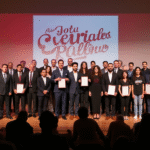What is the Annualized Total Cost (CAT) and Why It Matters
When seeking a loan or credit card, it’s crucial to be aware of the actual cost these financial products will incur. In financial terms, this value is known as the Annualized Total Cost (CAT), and it’s one of the key components you should pay attention to, as it reflects the total cost of credit.
Regulated financial institutions, such as banks, are obligated to inform potential customers about the average CAT of all their products. This allows users to compare available options in the market and make an informed decision.
While some perceive CAT as a simple percentage imposed arbitrarily by financial institutions, it’s essential to understand that the CAT comprises several elements.
- Various fees, such as cash withdrawal charges, account management fees, minimum usage requirements, foreign transaction fees, and late payment penalties, all contribute to elevating a user’s CAT.
Who is the Expert and Why Are They Relevant?
Ávila, a coordinator of financial education at Santander, emphasizes the importance of understanding CAT. He explains that while promotional materials or bank websites display a comparative CAT for users to evaluate different financial options, each individual has a unique CAT for every financial product they hold.
According to the National Commission for the Protection and Defense of Financial Services Users (Condusef), monthly account statements must specify each user’s individual CAT, along with the associated charges, interests, and fees. This information enables users to determine if their credit card or any other loan is more expensive than anticipated.
Strategies for a Lower CAT
Experts suggest that, particularly with credit cards, many fees can be avoided to lower the CAT. Improving usage and payment habits for financial products is key to making them as economical as possible.
“If you use your credit card at a level you know you can pay off on time, avoiding late payments and understanding the applicable fees, you can reduce your credit card’s CAT. In some cases, it may even reach a cost of 0% annually,” advises the financial education coordinator at Santander.
Key Questions and Answers
- What is CAT? The Annualized Total Cost (CAT) is a comprehensive measure reflecting the true cost of credit products, including loans and credit cards.
- Why is CAT important? Understanding your CAT helps you compare different financial products and make informed decisions, ensuring that the costs don’t exceed your expectations.
- What factors influence CAT? Various fees, such as cash withdrawal charges, account management fees, minimum usage requirements, foreign transaction fees, and late payment penalties, all contribute to elevating a user’s CAT.
- How can I find my individual CAT? Your monthly account statement should specify your unique CAT along with associated charges, interests, and fees. This information allows you to assess if your credit card or any other loan is more expensive than anticipated.
- How can I lower my CAT? By improving your usage and payment habits for financial products, you can minimize fees and potentially achieve a 0% annual cost.






